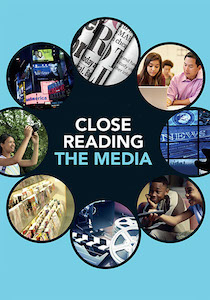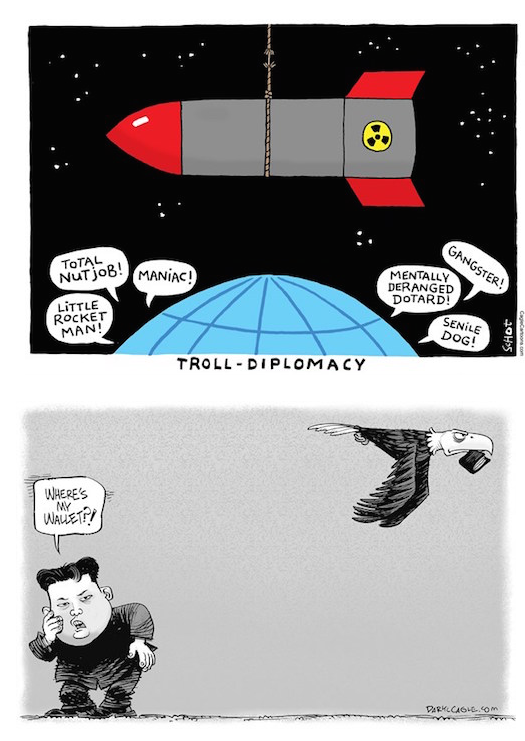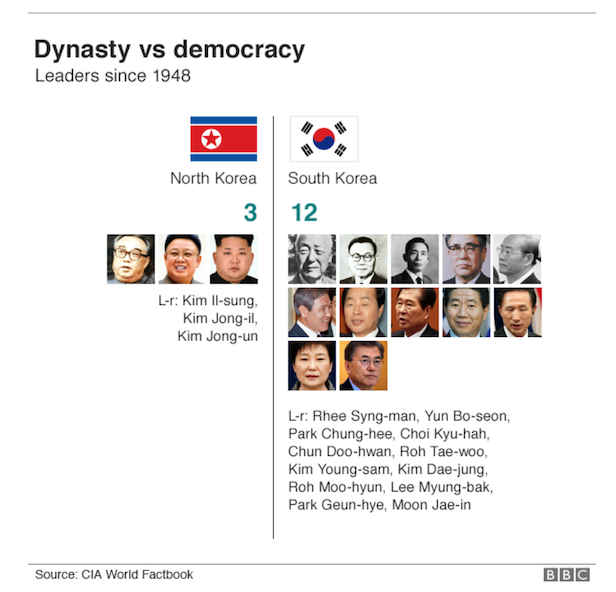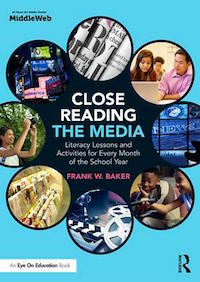If There’s War, How Will Students Get the News?
NOTE: This post was updated on 9/27/17 with more resources and a lesson idea – analyzing editorial cartoons about the conflict.
We don’t know if the United States will go to war with North Korea. Whether war begins or not, it’s a good bet that many of us will flock to the news for the latest developments in this ongoing, high-stakes struggle. Where will your students turn for reliable and trustworthy information?
Snapchat, Facebook and Twitter appear to be the three most popular venues teens go to for news, but these social media sites are not sources – they simply share information from other places, many of which are unreliable at best.
A 2017 University of Missouri study (The Trusting News Project) found that when it comes to most trusted news sources about the United States, four originate in the United Kingdom. They include The Economist, Reuters, the British Broadcasting Company (BBC), and The Guardian.
US-based sources mentioned as among the most trusted included National Public Radio (NPR), the Public Broadcasting Service (PBS), and The Wall Street Journal. (Source: AdWeek)
The Missouri study did not ask participants about breaking news. So where would you expect to get the latest news about possible conflict with North Korea? From an American perspective, cable news networks like CNN, FOX and MSNBC will certainly have reporters and talk shows focusing on popular news events. American-based ABC, CBS and NBC will most likely have round-the-clock coverage of any major war developments.
The PBS Newshour has a relationship with International Television News (ITN), based in Great Britain. For other international perspectives, many of us have access to networks such as the BBC , RT (Russia), SKY (Britain), and NHK (Japan) via our cable/satellite systems. Al Jazeera (based in Doha) streams its news live as does Euronews.
The History of War Reporting
Check with your school librarian to determine if they have any books on the history of war reporting, war documentary photography, or memoirs/biographies of notable war journalists. Obviously reporters and photographers put their lives on the line when they go into war-torn areas. A good question for students to consider is: what are the challenges for reporters in covering war and conflict?
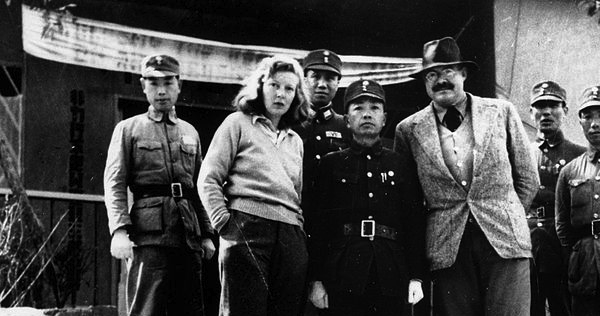
Famed war journalist Martha Gellhorn and husband Ernest Hemingway reported across the globe during WWII, occasionally together. (Wikipedia)
During World War II, CBS journalist Edward R Murrow, stationed in London, reported live from rooftops as German planes dropped bombs on the city. Your students could listen to one of his reports here. Defying the gender barriers of the time, Martha Gellhorn has been called one of the greatest war journalists of the mid-20th century – hiding away on a hospital ship during the invasion of Normandy (after being denied credentials) and reporting while she served as a stretcher bearer.
With the advent of satellite communications, vivid same-day television news reporting provided dramatic coverage of the Vietnam War and eventually began to shift national opinion about its necessity. Documentary filmmakers Ken Burns and Lynn Novick’s current Vietnam War PBS series offers tremendous insights about war and journalism during the rise of mass communications.
Questioning Sources of News Information
Students who will be following the news should also be given opportunities to question the reliability of their sources. (This becomes quite clear when we realize that many students joined adults in forwarding “fake news” via favorite social media networks.) Students should consider who is conveying the information and should listen, watch or read a variety of news sources to get a better perspective.
If war breaks out with North Korea, we can be sure that American reporters, working with the Defense Department, will attempt to be embedded with troops in order to be able to report from as close to North Korea as possible. This practice became popular during the 2003 invasion of Iraq.
Since American journalists are unlikely to be in North Korean territory, images from there must come from other sources. For example, surveillance or reconnaissance satellites often provide images of conflict areas. Those images will most likely be released by the US Department of Defense and seen via the news outlets. Will students know how to “read” those images?
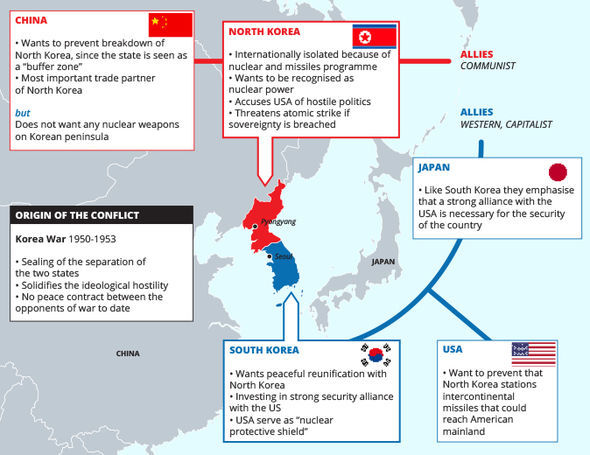
Source: The Daily Express (U.K.)
Good Time for Geo-Literacy
Could your students pick out North Korea from a map of that region of the world? Only 36% of those surveyed recently could correctly pick out the country from a map.
How much do they know about the geopolitics of the region? Now might be a good time to pull up your favorite map and familiarize students with North Korea and its strategic position and relationship to China, Russia, Japan, South Korea and other areas.
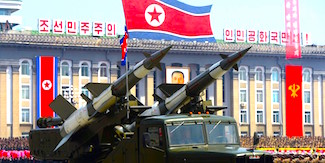
The coming month might be an appropriate time to explore the political, diplomatic (and journalistic) history involving JFK and Khrushchev – and the meaning of brinksmanship.
Here’s One Lesson Idea
Have students analyze and interpret a set of editorial cartoons about tensions between North Korea and USA (or other nations generally). After some review of the current political context (for example, sanctions vs. military action), and some general discussion about where/how editorial cartoons are used, form small discussion groups and give each group two cartoons, perhaps choosing two different political perspectives.
Have students answer questions like: What characters and objects are shown in the cartoon? What words are used? What political issue is being addressed? How are symbols used to represent people, places or things? What message do you think the cartoonist wants to convey? Then have them share the results of their analysis with the whole class.
Cagle Cartoons is a co-op website which shares and licenses editorial cartoons from all over the world, with many “political leanings.” In addition, cartoonist Daryl Cagle produces daily cartoons of his own, which he often analyzes – a real plus for teachers and students. Here’s what he said about the eagle cartoon above. Using cartoons in class for educational purposes, including boosting millennial students’ appreciation of this unique form of journalism, is fair use.
Resources about the Crisis with North Korea
► BBC Infographic: North and South Korea Comparison
UPDATE (2-8-18): “Here’s What War with North Korea Would Look Like” (Vox)
Frank W Baker, a former broadcast journalist, blogs and consults regularly about media literacy. His latest book, Close Reading The Media: Literacy Lessons and Activities for Every Month of the School Year, will be published in December 2017 by Routledge/Eye on Education in partnership with MiddleWeb. (Pre-buy at the Routledge site and receive a 20% discount with code MWEB1.)

